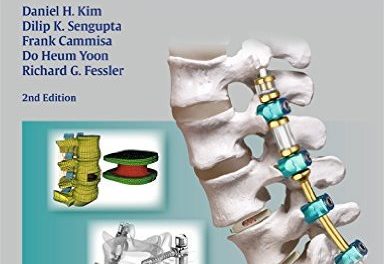From the Editors of Better Homes and Gardens
Publisher: Wiley Publishing
Book Review by: Laxmi Chaandi
This book deserves a medal for its superb organization of material and its layout.
You can easily go to see a list of the type of food you are looking for: breakfast suggestions, meatless dishes, pastas, pizzas and sandwiches, seafood, soups and stews, and other food categories along with easy-to-find page numbers for each dish
The page tabs are large to save you time looking. When you turn to the page for the dish you want, its recipe is on a single page – with the list of ingredients and quantities needed on the left and simple steps to preparation on the right. The directions are placed as 1, 2 and 3, and some with a 4 – it’s that simple.
Each recipe page shows you how much time it will take, and how many adults it will serve. Of course you can adjust quantities to you preference. Some pages give you a “Make-Ahead Directions” heading, which are some things to do ahead of preparation or cooking, to save time. Some pages treat you with a tip – something to make the dish more flavorful or to save you time.
Some pages have a separate heading after the steps to prepare a dressing. And some have a “Nutrition Facts per Serving.” note which informs you of the number of calories, and the quantity of each nutrient such as carbs, cholesterol, fat (including saturated fat), fiber (including dietary fiber), sodium and others.
At the beginning of the book, there is a “Power Up the Pantry” section that lists all the items you should have on hand (and replenish as needed) to save yourself shopping time. You would not want to be running out to the supermarket in the middle of cooking, would you?
Preparation is an essential ingredient for success, so before you get to the recipes, you have several sections to save you valuable effort, money and time. There is an “Embrace Convenience” heading that suggests certain types of convenience foods you can buy from a deli or grocery store. These are things like peeled, diced, sliced, mashed and-or flavored vegetables, items in a salad bar, roasted chicken or other cooked meat.
Other delightful headings before the recipes are: “Serve Simple Sides” which suggests items besides the usual veggies, fruits and salads. For example you can use fresh breads for dipping in dips or soups, or toasting on a grill; quick-cooking rice, or refrigerated pastas.
To save you even more time, the starting pages of this book have still other headings. For example, the “Canned or Frozen?” heading to answer your questions pertaining to which items you do not need to buy from the fresh vegetables section to save effort or money or time or all. The “Seek out Shortcuts” heading suggests using items like bagged salad, cubed kabobs, marinating mixes, prepared sauces, and shredded or slivered cheeses that you can have on hand in your kitchen when making your dishes.
The “Necessities” heading lists kitchen tools to have. Compare that with what you have in your kitchen. Do you, for example, have a box grater to help you shred whatever food or side dish you’re going to serve? Or an egg separator to separate the egg white from the yolk? What about a silicon scraper to get the old remnants out of your bowl, jar or pan?
The “Useful Extras” is another list to look at. Get useful doodads like a cheese slicer, citrus juicer, fine-mesh sieve, kitchen timer, micro plane, mortar and pestle, meat mallet, pastry brush, pastry blender, pizza cutter, potato masher and slotted spoon.
In a jam when you realize you do not have an ingredient needed for a dish? Relax. Just rely on the “Emergency Substitutions” list before browsing through the recipes. Most of us substitute tomato sauce when fresh tomatoes are required. But what about the instance when you did not have white wine called for as an ingredient? Did you know you can instead use white grape juice, apple juice or even chicken broth? Yes you can.
Browsing through the pages and pages of recipes that give you food ideas for each day of the year, you will see ideas on how to make many types of dishes.
You want to spend only 15 minutes to make a delicious breakfast for your family on a Sunday morning but don’t feel like giving your kids those sugary, unhealthful pop tarts? No problem.
In just two simple steps you can make the Denver Scrambled Eggs omelet. All you need are: 6 eggs, 1/3rdcup milk, 2 tablespoons butter, 1 cup sliced mushrooms, 1/3rd cup diced cooked ham, ¼ quarter cup chopped onion, and 2 tablespoons finely chopped green sweet peppers.
Simply melt the butter in a large heated skillet. Combine the eggs, milk and pepper in a bowl and add the ham, mushrooms, onions and sweet peppers. Then simply pour the egg mixture on to the skilled, cook for two minutes and you have a delicious breakfast. Enjoy.
For other times of the day, you have a vast number of delectable dishes that can be prepared rather quickly and easily. Go to the section with full-color photos of mouth-watering meats, pastas, pies, vegetables, seafood and other types of food. Pick the item you want to make, see the page number on that photo, go to that page and follow the simple steps to prepare that dish.
At the end of the book, there’s an index that starts simply with the name of the tangible item. There is also a helpful table of weights and measures
This is a wonderful book – a must-have addition to your collection of cookbooks. It’s a real time-saver for busy people who don’t want to labor for hours over hot stoves but want quick, delicious meals. Jan Miller, its editor; Jeanne Ambrose, its contributing editor; and Natalie Chapman, its publisher, deserve credit for their excellent work on it.






